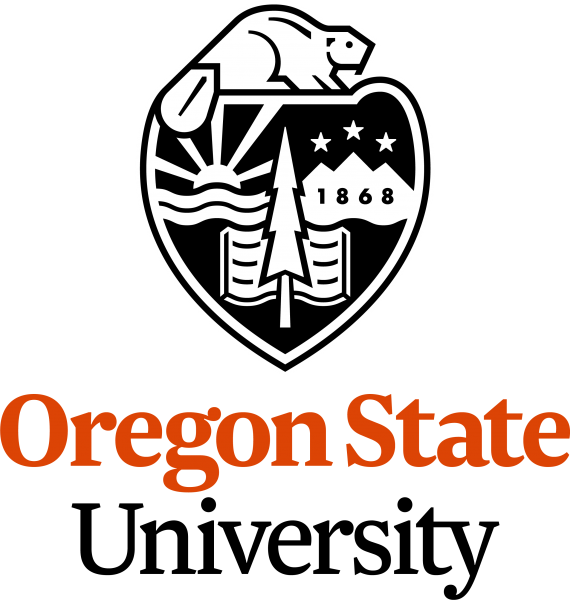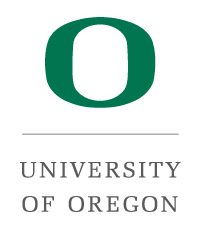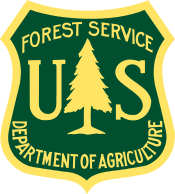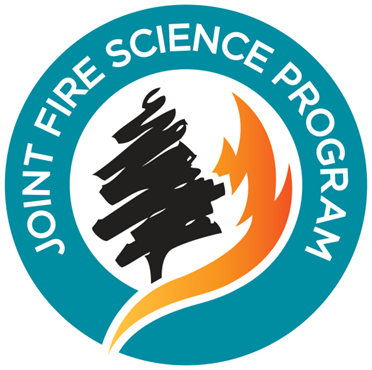Partner Feeds
2018-08-24 Smoke Outlook North Columbia Basin (Crescent Mountain Fire Wildfire)
Front lines of the flame: The work of wildland firefighters
When a spark quickly turns into a fast-moving wildfire, our firefighters are there for us — many times in minutes.
They fly over fiery landscapes that heat up our helicopters, anywhere from 100 to 120 degrees. They dig lines around roaring fires in shifts that can last up to 16 hours. They sacrifice time with their families to work on the fireline for weeks on end.
All to safeguard our communities and protect our lands.
Firefighter at work during Cougar Creek Fire west of Entiat.Describing the heroic efforts of our firefighters could be an infinite list, and our appreciation is so great — words sometimes don’t do it justice. Especially when we’re in the thick of our wildfire fighting efforts, like right now.
More than 3,500 firefighters are out on the landscape this August, as 12 large fires burn in Washington state. As of Aug. 23, the Department of Natural Resources responded to 1,163 fires on 300,139 acres. (For context, on a 10-year average, we respond to 1,534 fires for 170,936 acres.)
Firefighters and guardsmen take a moment to reflect on their hard work on the Sheep Creek Fire. (Image: National Guard).While we are on a trajectory to have the most fires we’ve ever seen, we’re also on track to keep over 90 percent of fires under 10 acres — it’s a goal our firefighters have worked hard to meet through effective wildfire fighting tactics and interagency coordination.
So what exactly are those tactics?
Outlining everything our firefighters do would take a textbook to explain, but we’ve compiled some common practices to give you a look at what it’s like on the frontlines of wildfires.
Why we dig linesTo make a fire stop growing, our firefighters have to contain it. We do that by digging line — essentially a trench several feet wide — around the perimeter of the fire.
“We’re supposed to remove any fuel that could burn within the fireline,” Washington wildland firefighter Ryan Dahl explained during a training exercise earlier this year.
When a fire becomes hundreds of square miles, that’s a days-long task. Digging line also becomes more difficult in hard-to-reach landscapes.
“Some of the topography firefighters work during wildfires is challenging,” said Commissioner of Public Lands Hilary Franz. “They’re climbing up some steep ravines, trying to hold their grip [of their tools] and draw the line.”
Firefighters use several tools to dig line: Pulaski axe, Mcleod rake, shovel, to name a few. And they swing those tools all while carrying a heavy pack full of supplies on their back and wearing protective gear. Bulldozers also work on lines.
Supervisor standing close to one of our 117 wildland fire engines, as other firefighters dig line during a training exercise.Keep in mind, when we say a fire is “100% contained,” that doesn’t mean it’s stopped burning. It means that a barrier will keep it from spreading.
Containment is just a part of the fight. Firefighters work on other operations to control the fire, which includes mopping up — extinguishing or removing burning material — and burnout operations — cleaning up line with fire.
How we fight fire with fireAt the end of a 20-person ground crew linea firefighter with a drip torch may be working on burnout operations.
A drip torch — a canister that drops flaming fuel to the ground — is used for both burnout operations and backfires.
“We’ve coined the phrase, ‘sometimes we fight fire with fire,’” said DNR Assistant Fire Operations Manager Aaron Schmidt. “A backfire is used to alter the course of a fire, and a burnout is simply cleaning up some line.”
Firefighters go through training to learn how to safely use a drip torch.
Training and working as a teamWhen it comes to wildfires, we are all in this together. We kick off interagency efforts early in the summer. This is just the second year that nearly 1,200 firefighters trained at three wildfire academies to prepare for a challenging wildfire season.
This provides quality wildland fire training at no-cost to interagency firefighting partners. Each academy uses local, state and federal firefighters’ expertise to teach the courses.
“We are training all of our firefighting teams together. We believe the more we are closely working and training together, we can begin the coordination, collaboration, and communication we know we need on the fireline,” said Commissioner Franz during the Western Washington Interagency Fire Training Academy.
We’re also working to take our teamwork to the next level.
The Washington Wildland Fire Protection strategic planning process will bring together the leaders, partners, and stakeholders in wildland fire prevention, response, and community resilience to envision a new future for effective wildland fire management. View our fact sheet for the development of the WA Wildland Fire Protection Strategic Plan here.
The importance of aviationOur air assets are crucial in our strategy for initial attack—the actions taken by the first resources to arrive at a wildfire helps to protect lives and property, and prevent further expansion of the fire.
DNR’s Wildfire Aviation is comprised of 8 UH-1H (B-205) helicopters modified for water/suppressant delivery in remote locations with the capability to deliver helitack crews into otherwise unreachable terrain. A helitack crew is a group of firefighters trained in the technical and logistical use of helicopters for fire suppression.
One of DNR’s eight UH-1H aircrafts. Often you’ll see this aircraft with a bambi bucket, dropping water over wildfires.DNR keeps a mix of aircraft in addition to helicopters, including water scoopers like Fire Bosses and Single Engine Air Tankers (SEATs) that can deliver up to 800 gallons of fire retardant.
Aircraft and helitack crews attempt to be in the air responding to emerging fires within five minutes. Planning is conducted in the air using satellite imagery and mobile devices. Once the team arrives on a fire, incident command is established, or reinforced with other responding air and ground resources.
“We’re an enabler to the ground crews,” said DNR Chief Pilot Dave Ritchie. “We help slow it down, so the ground firefighters can get there and put it out.”
Our crew also maintains our aircraft. Our helicopters served in Vietnam, and are some of the most well-maintained aircraft DNR’s Fire Aviation Program Manager Michael Cuthbert has seen in his career.
“The UH-1H are just the right aircraft for the job,” said Cuthbert. “Super proud of these aircraft, super proud of the guys who maintain them and the guys who actually fly them.”
Feeding the fightOur most important resource? Our people, of course.
Firefighters burn around 6,000 calories a day. That’s how much some Olympic athletes eat. So we come prepared and take feeding our firefighters seriously.
It’s heartwarming to hear that the community wants to give back to our firefighters. And while we appreciate the sentiment, we take pride in coming prepared (and not becoming a burden to the impacted community) to feed our firefighters well. So we’re very methodical in the kitchen to make sure our firefighters get the proper nutrition. If you’re interested in helping, consider giving to a food bank or another local organization like the Red Cross.
What do firefighters have to say?Our firefighters wake up early and work late, responding to their strong call to protect people’s homes and our state’s resources.
When you talk to firefighters about their work, they are humble about their awe-inspiring dedication.
“When I put my boots on, and my greens and yellows, I feel a sense of pride to be helping my community,” said Washington wildland firefighter Gretchen Happe.
Happe best tells her story in the video below, along with a few other firefighters working on the fireline this summer.
So what can you do while firefighters are hard at work? Practice prevention. More than 85 percent of our wildfires are human-caused. You can be one less spark, and all it takes is being wildfire aware. Learn how to prevent wildfires here.
And anyone who spots a wildfire should call 911 as soon as possible to report it.
DNR’s wildfire missionLed by Commissioner of Public Lands Hilary Franz, DNR is responsible for preventing and fighting wildfires on 13 million acres of private, state and tribal-owned land. DNR is the state’s largest wildfire fighting force.
Boyds Fire Update - August 24, 2018 (Boyds Fire Wildfire)
Horns Mountain Update 8-24-18 (Horns Mountain Wildfire)
All Evacuations lifted (Stubblefield Fires Wildfire)
Miriam Fire Update August 24, 2018 (Miriam Fire Wildfire)
Watson Creek Fire Daily Update 8-24-2018 (Watson Creek Fire Wildfire)
2018-08-24-Spanish-Update-CrescentMTN (McLeod Fire Wildfire)
2018-08-24-Spanish-Update-CrescentMTN (Crescent Mountain Fire Wildfire)
Ramsey Canyone Fire 8/24/18 AM Update (Ramsey Canyon Fire Wildfire)
8/24/18 Terwilliger Fire Update (Terwilliger Fire Wildfire)
8/24 Natchez Fire Update (Natchez Fire Wildfire)
August 24, 2018 Cougar Ck, Lost, & Bannock Lakes Fires Update (Cougar Creek Wildfire)
DNR Partners With Navy To Protect Hood Canal
Hood Canal – The Department of Natural Resources (DNR) and U.S. Navy entered into an agreement that creates a “restrictive easement” along 32 miles of Hood Canal’s eastern shore.
The easement, which covers 2,481 acres of aquatic bedlands, prohibits new construction such as wharfs, piers, platforms, and structures for industrial use.
The Navy will pay DNR $342,000 for the easement, which is fair market value.
“This partnership strengthens our military preparedness and strengthens our waterways by protecting critical habitat in Hood Canal,” said Commissioner of Public Lands Hilary Franz. “This is truly an example of mutual benefit for our navy, communities, and public waters.”
Supporting Our Navy
Hood Canal is a “Military Operating Area” for Naval Base Kitsap. Limiting disruption in this area is critical for Navy operations, including research, testing, and training.
“The Navy’s ability to use Hood Canal for military operations depends on reducing incompatible development and noise,” said Alan Schrader, Commanding Officer, Naval Base Kitsap. “Through this agreement, the Navy will be able to continue training and testing at Naval Base Kitsap for decades to come.”
In 2014, DNR and the Navy entered into a similar agreement to create an easement on 4,800 acres of Hood Canal’s western shore (along Jefferson County and portions of Mason County). With both easements now in place, Hood Canal is protected from further development and noise pollution that may have interfered with Navy uses.
Protecting Marine EcosystemsThe easement also benefits Washingtonians by providing new protections for sensitive marine ecosystems. All 2,4810 acres covered by the easement are designated critical habitat, including eelgrass communities and geoduck tracts.
“The Hood Canal Coalition has been involved in protecting Hood Canal for nearly 20 years. We applaud the Navy and the Department of Natural Resources for this latest collaborative effort to ensure the long-term health of this magnificent and biologically vital waterway,” said John Fabian, a retired Air Force Colonel and NASA astronaut who heads the Hood Canal Coalition.
Overview:
- The easement begins 18 feet from the shore and extends out 70 feet, covering 2,800 acres. It stretches along eastern Hood Canal from The Hood Canal Bridge to south of Chinom
- The easement if for 55-years.
- The Navy is paying DNR $342,000, which is the appraised fair market value.
- The easement does not apply to:
- Existing structures or authorized uses, such as marinas and cable lines.
- Recreational uses, including fishing, boating, and public access.
- The easement does not limit the installation of private recreational docks.
- This is a non-possessory easement. DNR will continue to manage these aquatic lands under its aquatic lands program.
- The Navy uses Hood Canal to test unmanned vehicles, submarine readiness, diver training, and similar activities related to undersea warfare. Explosives are not tested or placed on test units.
As steward of 2.6 million acres of state aquatic lands, DNR manages the bedlands under Puget Sound and the coast, many of Washington’s beaches, and natural lakes and navigable rivers. DNR manages these lands to ensure protection of aquatic habitat and facilitate navigation, commerce, and public access.
MEDIA NOTE: Photos, videos and other materials from today’s event are available for media use in this Google Drive.




